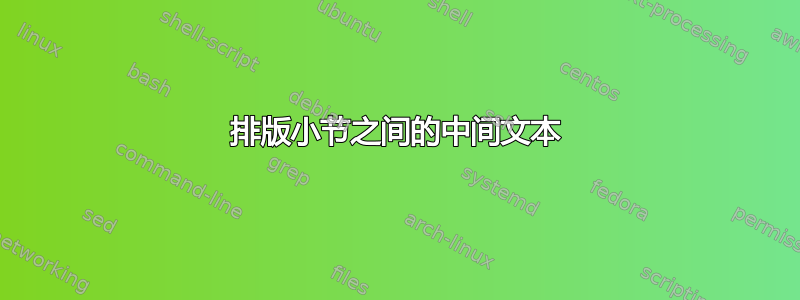
免责声明:这是一个排版问题。我不是在要求 (La)TeX 代码。
我遇到一种情况,用中间解释性文字将一组小节与同一节中的另一组小节分开似乎是个好主意。
\section{Operators of XYZ}
\subsection{A}
bla
\subsection{B}
...
\subsection{F}
bla
\begin{sameLevelAsSection}
In further publications, the definition and names of some of the operators changed as...
...lengthy explanation of problems with the old definition...
...longer than a single sentence, more like 2-3 Paragraphs.
\end{sameLevelAsSection}
\subsection{G}
bla
\subsection{H}
bla
我可以
- 将此评论放入信息框,但这并没有真正显示与原始部分的关联。
- 引入另一个层次结构,这似乎是不必要的,因为匹配的层次结构级别已经存在。
我更喜欢看起来更专业(最好是“纯文本”)的解决方案。
针对这种情况,是否有排版惯例?您有什么建议吗?
背景:该文件是一篇科学文本,有200多页。
答案1
您说这是排版问题,那么请考虑如何将其设置为普通文本(无(子)部分)。您拥有的是一个列表,然后是列表的补充。
“我们的常规颜色是红色、蓝色和黄色。但对于特殊订单,我们可以提供橙色和粉色。”例如,可以这样写:“常规订单:红色、蓝色、黄色。特殊订单:橙色、粉色。”
用 LaTeX 术语来说,你的问题是:
\section{Operators...}
Some description
\subsection{...}
\section{Further operators ...}
Some description
\subsection{...}


